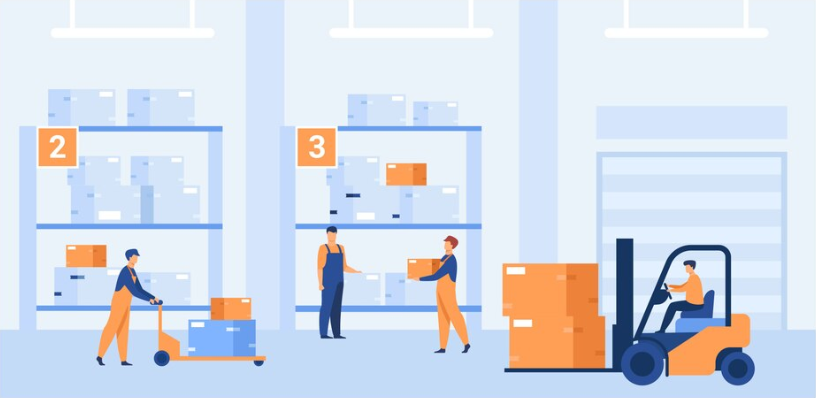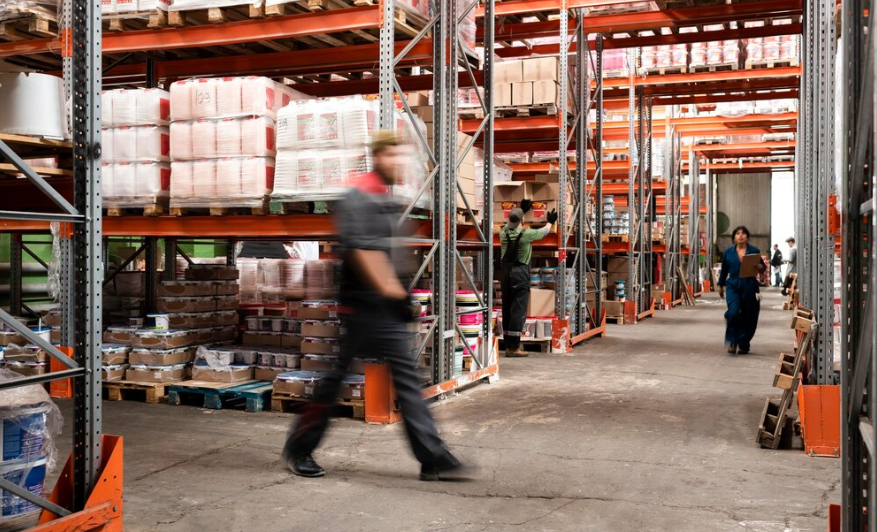Table of Contents
- 1. What Does Consolidated Shipping Mean in Shipping?
- 2. Why Do You Need Consolidated Shipping?
- 3. What Kinds of People Need Consolidated Shipping?
- 4. How Does Consolidated Shipping Work?
- 5. What Is the Difference Between Direct Shipping and Consolidated Shipping?
- 6. Challenges of Consolidated Shipping
- 7. Conclusion
- 8. FAQs
What Is Consolidated Shipping? A Complete Guide
Time: May 20,2025 Author: SFC Source: www.sendfromchina.com
In the intricate world of logistics and supply chain management, efficiency and cost-effectiveness are paramount. One strategy that has gained prominence in achieving these goals is consolidated shipping. The method involves combining multiple smaller shipments, often from different shippers, into a single, larger shipment. By doing so, businesses can optimize transportation resources, reduce shipping costs, and minimize environmental impact.
1. What Does Consolidated Shipping Mean in Shipping?
In the logistics and supply chain industry, consolidated shipping—also known as freight consolidation or cargo consolidation—is a method where multiple smaller shipments, often from different shippers, are combined into a single, larger shipment. This approach is particularly beneficial for businesses that do not have enough cargo to fill an entire container or truckload. By consolidating shipments, companies can share transportation costs, leading to more economical shipping solutions.The process typically involves collecting individual shipments at a consolidation center, where they are sorted and combined based on their destination. The consolidated shipment is then transported to a deconsolidation center near the final destination, where it is separated and delivered to the respective recipients. The method not only streamlines the shipping process but also enhances delivery reliability and tracking capabilities .
Consolidated shipping is commonly used in various modes of freight transportation, particularly for ocean and air freight, to optimize space, reduce costs, and improve efficiency. The goal is to fully utilize the capacity of a container or truck, thus minimizing wasted space. Instead of shipping individual orders separately, which can be expensive and inefficient, a consolidator combines various shipments into one full load.
Consolidated shipping is particularly useful for companies that deal with less-than-container load (LCL) or less-than-truckload (LTL) shipments, which refer to smaller freight shipments that do not fill an entire container or truck. By leveraging consolidated shipping, businesses can achieve significant cost savings, improve delivery times, and reduce their environmental impact.
2. Why Do You Need Consolidated Shipping?
Consolidated shipping offers a multitude of advantages that can significantly enhance your logistics operations. Here's an in-depth look at why this method is beneficial:
Cost Efficiency
Consolidated shipping allows businesses to combine multiple smaller shipments into one larger load, sharing transportation costs among various shippers. This approach is especially advantageous for small to medium-sized enterprises (SMEs) and e-commerce retailers who may not have enough cargo to fill an entire container or truckload. By paying only for the space used, companies can achieve substantial savings on shipping expenses.Optimized Space Utilization
By merging shipments heading to similar destinations, consolidated shipping maximizes the use of available space in containers or trucks. This optimization reduces the number of partially filled vehicles on the road, leading to more efficient transportation and lower per-unit shipping costs.Environmental Benefits
Consolidating shipments contributes to sustainability efforts by decreasing the number of vehicles required for transportation. Fewer trips mean reduced fuel consumption and lower carbon emissions, aligning with eco-friendly business practices and meeting the growing consumer demand for environmentally responsible operations.Enhanced Shipment Security
With fewer individual shipments, consolidated shipping reduces the handling of goods, thereby minimizing the risk of damage or loss during transit. Additionally, consolidated loads often involve better packaging and palletization, offering extra protection to the cargo.Streamlined Customs Clearance
For international shipments, consolidated shipping can simplify the customs process. A single consolidated shipment with proper documentation can expedite clearance procedures, reducing delays and associated costs.Improved Inventory Management
Regular consolidated shipments can lead to more predictable inventory replenishment cycles. Thepredictability allows businesses to manage stock levels more effectively, reducing the need for large inventory holdings and associated storage costs.Access to Broader Markets
By lowering shipping costs and improving efficiency, consolidated shipping enables businesses to expand their reach to new markets. This accessibility is particularly beneficial for SMEs looking to grow their customer base without incurring prohibitive logistics expenses.3. What Kinds of People Need Consolidated Shipping?
Consolidated shipping is a versatile solution that caters to a diverse range of individuals and businesses. Its cost-effective and efficient nature makes it particularly appealing to those who ship smaller volumes or seek to optimize their logistics operations. Below are some key groups that benefit from consolidated shipping:
Small and Medium-Sized Enterprises (SMEs)
SMEs often face the challenge of shipping goods that do not fill an entire container or truckload. Consolidated shipping allows these businesses to share transportation costs with others, making it a financially viable option. By paying only for the space they use, SMEs can manage their shipping expenses more effectively and compete with larger companies.E-commerce Retailers
Online retailers frequently deal with numerous small orders destined for various locations. Consolidated shipping enables them to combine these orders into a single shipment, reducing shipping costs and improving delivery times. The method also simplifies inventory management and enhances customer satisfaction by ensuring timely deliveries.Importers and Exporters
Businesses involved in international trade often source products from multiple suppliers or ship to various customers. Consolidated shipping streamlines this process by allowing them to combine shipments, simplifying customs procedures and reducing international shipping costs. The approach is particularly beneficial for those importing or exporting smaller quantities of goods.Manufacturers
Manufacturers that receive components from different suppliers can utilize consolidated shipping to combine these shipments into one. The strategy reduces the number of deliveries, lowers transportation costs, and ensures a steady supply of materials for production. It also aids in maintaining efficient production schedules and minimizing downtime.Individuals Shipping Personal Goods
Individuals relocating or sending personal items internationally can benefit from consolidated shipping. By sharing container space with others, they can significantly reduce shipping expenses. It is ideal for those who do not have enough items to fill an entire container but still require international shipping services.Freight Forwarders and Logistics Providers
Companies specializing in freight forwarding and logistics often use consolidated shipping to optimize their operations. By combining shipments from multiple clients, they can maximize container utilization, reduce costs, and offer competitive pricing. The approach also allows them to provide more flexible shipping options to their customers.4. How Does Consolidated Shipping Work?
Consolidated shipping is a logistics strategy that combines multiple smaller shipments into a single, larger shipment. This approach optimizes space, reduces costs, and enhances efficiency in the transportation process. By bundling shipments heading to similar destinations, businesses can achieve significant savings and streamline their supply chains.
Step 1: Collection of Shipments
The process begins with the collection of individual shipments from various shippers. These shipments are typically less-than-truckload (LTL) or less-than-container-load (LCL), meaning they do not fill an entire truck or container on their own. The goods are transported to a consolidation center or warehouse where they will be prepared for combined shipping.Step 2: Consolidation at the Warehouse
At the consolidation center, the collected shipments are sorted and grouped based on their destination and delivery timelines. This step involves careful planning to ensure that the combined shipments are compatible and can be transported together efficiently. Proper packaging and labeling are essential to maintain the integrity of each individual shipment within the consolidated load.Step 3: Transportation of Consolidated Shipment
Once the shipments are consolidated, they are loaded onto a single truck, container, or other transport vehicle. The consolidated shipment is then transported to its destination hub. It maximizes the use of available space, reduces the number of trips needed, and lowers transportation costs.Step 4: Deconsolidation at Destination Hub
Upon arrival at the destination hub, the consolidated shipment is unloaded and deconsolidated. Each individual shipment is separated and prepared for final delivery to its respective recipient. The step requires accurate tracking and documentation to ensure that each shipment reaches the correct destination.Step 5: Final Delivery to Recipients
The individual shipments are then delivered to their final destinations. This last-mile delivery can be handled by local carriers or logistics providers, depending on the location and specific requirements of each shipment. Effective coordination and communication are crucial during this phase to maintain timely and accurate deliveries.5. What Is the Difference Between Direct Shipping and Consolidated Shipping?
understanding the distinctions between direct shipping and consolidated shipping is crucial for businesses aiming to optimize their operations. Both methods offer unique advantages and are suited to different shipping needs.
Direct Shipping
Direct shipping involves transporting goods directly from the supplier or manufacturer to the end customer without any intermediate stops or handling. The method is characterized by its speed and simplicity, making it ideal for time-sensitive deliveries.Key Features:
- Speed: Since the shipment goes directly to the customer, transit times are significantly reduced.
- Reduced Handling: Fewer touchpoints mean a lower risk of damage or loss.
- Higher Costs: The convenience and speed come at a premium, often resulting in higher shipping costs.
- Ideal For: Urgent deliveries, high-value items, or large shipments that justify the cost.
Consolidated Shipping
Consolidated shipping, also known as freight consolidation, combines multiple smaller shipments from different shippers into a single, larger shipment. This method is cost-effective and efficient, especially for businesses that do not have enough cargo to fill an entire container or truckload.Key Features:
- Cost Savings: By sharing transportation costs among multiple shippers, each pays only for the space their goods occupy.
- Efficient Space Utilization: Maximizes the use of container or truck space, reducing wasted capacity.
- Longer Transit Times: Additional handling and stops can extend delivery times.
- Ideal For: Small to medium-sized businesses, e-commerce retailers, and those shipping smaller volumes.
Comparison Table
This content is only supported in a Feishu DocsChoosing the Right Method
The decision between direct and consolidated shipping depends on various factors, including budget, delivery urgency, shipment size, and the nature of the goods. For instance, if you're shipping perishable items that require quick delivery, direct shipping might be the better option. Conversely, if you're looking to minimize costs and your shipment isn't time-sensitive, consolidated shipping could be more appropriate.6. Challenges of Consolidated Shipping
While consolidated shipping offers numerous benefits, it also presents several challenges that businesses must navigate to ensure efficient and cost-effective operations. Here are some of the key challenges associated with consolidated shipping:
Complex Coordination and Planning
Consolidated shipping involves merging multiple shipments from different shippers, each with unique requirements and destinations. Coordinating these shipments requires meticulous planning to ensure compatibility in terms of delivery timelines, handling needs, and destination routes. Misalignment in any of these aspects can lead to delays and increased operational complexity.Potential for Delays
The nature of consolidated shipping means that the final delivery is contingent upon the readiness of all individual shipments. If one shipment is delayed, it can hold up the entire consolidated load, affecting delivery schedules and customer satisfaction.Increased Handling Risks
Combining multiple shipments increases the number of touchpoints during transit, which can elevate the risk of damage, loss, or misplacement of goods. Each additional handling point introduces potential vulnerabilities that need to be managed carefully.Compatibility Issues
Not all goods are suitable for consolidation. Items requiring specific temperature controls, hazardous materials, or fragile goods may not be compatible with other shipments. Ensuring that all consolidated items can coexist without compromising safety or quality is a significant challenge.Complex Documentation and Compliance
International consolidated shipments often involve complex documentation and compliance requirements. Managing customs declarations, tariffs, and regulatory compliance for multiple shipments within a single consolidated load can be administratively burdensome and error-prone.Limited Flexibility
Consolidated shipping schedules are typically fixed to optimize efficiency and cost. This rigidity can limit flexibility for individual shippers who may require expedited delivery or have last-minute changes, making it less suitable for time-sensitive shipments.Tracking and Visibility Challenges
Monitoring individual shipments within a consolidated load can be challenging. Limited visibility into the status of each shipment can hinder proactive issue resolution and affect customer communication.7. Conclusion
Consolidated shipping stands out as a strategic approach for businesses aiming to optimize their logistics operations. By combining multiple shipments, companies can achieve cost savings, improve efficiency, and reduce environmental impact. However, it's essential to weigh the benefits against potential challenges and assess whether this method aligns with your specific shipping needs.8. FAQs
Q1: Is consolidated shipping suitable for urgent deliveries?
A: Typically, no. Consolidated shipping involves additional handling and stops, making it less ideal for time-sensitive shipments.Q2: Can I track my shipment in a consolidated load?
A: Yes. Most logistics providers offer tracking services, even for consolidated shipments, ensuring visibility throughout the transit process.Q3: Are there size or weight limitations for consolidated shipping?
A: While consolidated shipping is flexible, extremely large or heavy items may require special arrangements or may not be suitable for consolidation.Q4: How does consolidated shipping affect customs clearance?
A: Consolidated shipments can streamline customs processes by grouping similar goods, but it's crucial to ensure accurate documentation for each consignment.Q5: What types of goods are best suited for consolidated shipping?
A: Non-perishable, durable goods that are not time-sensitive are ideal candidates for consolidated shipping.SFC
 Post Views:495
Post Views:495
Text Link:https://www.sendfromchina.com/NewsCenter/what-is-consolidated-shipping.html
Copyright statement: The copyright of this article belongs to the original author. Please indicate the source for reprinting.
Previous Post
What Is Economy Shipping? Everything You Need to Know Before Choosing It
Next Post
What Is Supply Chain Flow? A Complete Guide for E-Commerce Businesses
TAGS
Hot Research
Get a Custom China Fulfillment Solution with FREE Storage for 60 Days
 Want to know about our services, fees or receive a custom quote?
Want to know about our services, fees or receive a custom quote?
 Please fill out the form on the right and we will get back to you within a business day.
Please fill out the form on the right and we will get back to you within a business day.
 The more information you provide, the better our initial response
will be.
The more information you provide, the better our initial response
will be.





 TAGS:
TAGS: